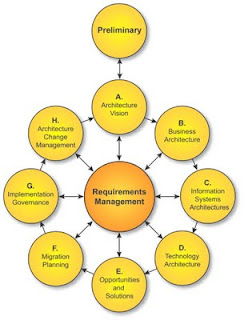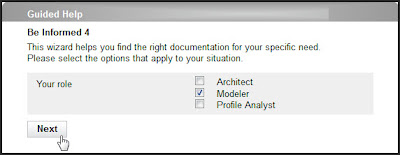Writing Effective Articles: 3. Pick Your Audience
In the previous blog posts, we have talked about the criteria for effective articles and how important it is to set a goal before you start. Now suppose you have decided to write an article about new technology that enables organizations to perform better and make more profit. The goal of your article is to persuade the reader to come to one of the conferences where your company demonstrates this new technology. Would you be interested to hear what your neighbor – a software engineer – thinks of this article? Or the gardener? Or your kids?
If you write an article that is supposed to generate new opportunities for your organizations, you are typically aiming at decision makers within a specific industry. So while your neighbor – the software developer – can find your article too shallow and lacking the technical details he is looking for, your targeted audience of decision makers could possible find it too technical and detailed. Of course you can try to write an article that would be attractive for all of them, but to be honest: what is the point? As I have stated before in the previous blog post, writing effective articles is a goal-driven activity. So choose a target audience that is aligned with your goals.
The audience is part of the goal
 |
| Aim at a specific audience and define them |
Defining your target audience
In my last blog post, I stated that writing an effective article means that you focus on one of more of the following goals:
- Motivating the audience to do something;
- Changing the way people think about a topic;
- Making the audience share your thoughts with others.
When defining your audience, you can use these goals to create open questions which help you to define your target audience:
- Who do I want to motivate to do something?
- From which group of people do I want to change the way they think about a topic?
- Who do I want to share my ideas to others, who could be my advocate or preacher?
Remember the example I have used in my last blog post? In 2013 I wrote an extensive article (and a series of blog posts) about improving product and brand engagement through smart documentation. My goal in that case was to persuade a pre-defined target group to register on the Be Informed website and start using the software to make smarter documentation. So the question I had to answer to define my target group was:
- Who do I want to register on the website and use a free version of our software?
The answer to this question is: technical communicators working on documentation products in mid- to large size companies.
Are you in or are you out?
Now let’s have a look at the target audience for the article you are reading right now. What could possibly be my target audience? And more important: are you part of this target audience?
The goals of this article – as defined in my previous blog post – are:
- Motivate my audience to start writing more effective articles
- Convince my audience to follow a goal-driven approach in writing articles
- Motivate my audience to share and discuss my thoughts on writing articles with others.
Looking at the goals, we can conclude a number of things about the target audience:
- The target audience consists of people that want to write an article or have already written one of more articles
- The target audience consists of people that are willing to try something new
- The target audience includes people that are active on the social media and / or in writing related organizations
I would define this group as subject matter experts, thought leaders and experienced consultants. For a first overall description of the target audience this will do, next we will get into more detail and specify our target audience in a way that we can really anticipate on their knowledge, attitude, expectations and needs.
Through the eyes of the reader
To be able to adapt your message to your readers, you need to know them. The best thing to do so, is by performing an audience analysis. Normally this would involve doing a demographic research and a possible attitude analysis among your possible readers. In a goal-driven approach we still need to think of our audience, but we can limit ourselves to our targeted group and only analyze what is relevant for reaching our goal.
Start by defining your audience in terms of demographics, for instance:
- Age
- Gender
- Profession
- Culture and / or ethnicity
- Religion
- Education level
Of course you don’t have to specify everything, just focus on the relevant things: anything that helps you to identify your target audience. For this article I would say my target group is:
- Age: 30 - 60
- Gender: M/F
- Profession: Consultant, thought leader, subject matter expert
- Culture and/or ethnicity: all
- Religion: all
- Education level: High
The next thing we need to define is the attitude of the target audience towards the topic. In the case of this article, this would be:
- Attitude towards writing: positive
- Attitude towards a goal-driven approach at work: neutral to positive
- Attitude towards goal-driven writing: not decided / neutral
And finally we have to think about the knowledge of the target audience about the topic. In this case I would say:
- Knowledge about writing in general: Practitioner to expert
- Knowledge about writing methods and techniques: Novice to expert
So to summarize:
My target audience consists of experienced consultants, thought leaders and subject matter experts, age 30 and older, with a high education level, a positive attitude towards writing and at least some knowledge of writing in general.
Know your audience, act accordingly
Now that you know your audience, the next step is to set your strategy and create a conceptual model of your article. During this step – and all following steps – you can use your goals and targeted audience as a reference, constantly verifying that you are still on the right track to reaching your goals.
My next blog post will be about the final step before the actual writing: Creating the conceptual model. In this step we will make the outline for our article. When the conceptual model – the blue print of your article – is ready, we can finally start writing. Next we will look into the reviewing process, followed by some advices about pretesting.


Comments